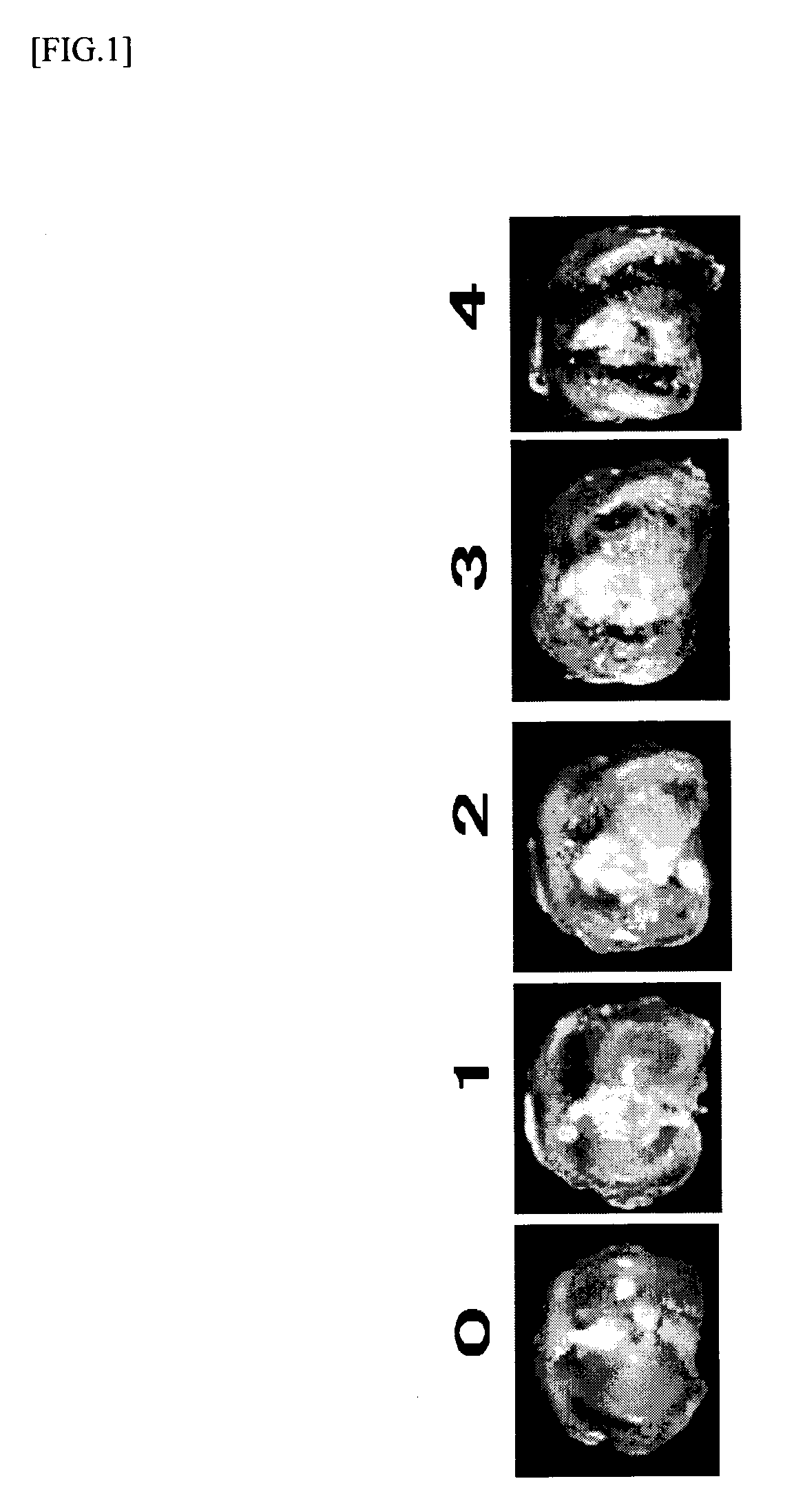Pain remedy containing rock inhibitor
- Summary
- Abstract
- Description
- Claims
- Application Information
AI Technical Summary
Benefits of technology
Problems solved by technology
Method used
Image
Examples
example 1
Therapeutic Effect of the Rock Inhibitor in Monoiodoacetate (MIA)-Induced Osteoarthritis Model
Analgesic Test by Assessment of Hindlimb Weight Distribution
[0059]This disease model was prepared according to the description in Toxicol Pathol 31(6), 619-624 (2003). Female SD rats (6-7 weeks old, Charles River Laboratories Japan, Inc.) were anesthetized with halothane (Takeda Pharmaceutical Company, Limited) and given a single intra-articular injection of 1 mg of monosodium iodoacetate (MIA; Sigma, St. Louis) through the infrapatellar ligament of the right knee. MIA was dissolved with physiological saline and administered in a volume of 50 μL using a 27-gauge, 0.5-inch needle. Three weeks after the injection of MIA (establishment of pathology of osteoarthritis), single oral administration of a ROCK inhibitor or diclofenac was given and the weights of both hindlimbs of the rats were determined using an incapacitance tester (Linton Instrumentation, Norfork, UK) 2 hours after administration...
example 2
Pain Alleviation Effect of the Rock Inhibitor on Bradykinin-Induced Joint Pain Model
[0060]Preparation of the Joint Pain Model and Evaluation of a Level of Pain were conducted based on the description in Folia pharmacol. japon. 92, 17-27 (1988). Female SD rats (6-7 weeks old, Charles River Laboratories Japan, Inc.) were anesthetized with halothane (Takeda Pharmaceutical Company, Limited) and given a single intra-articular injection of a saline solution of Wf536 or Compound 2 into the knee joint cavity of the hindlimb using a 27-gauge, 0.5-inch needle at a dose of 0.03 μg / site, 0.3 μg / site or 3 μg / site. Thirty minutes after administration of the drug, a physiological saline solution of bradykinin was injected into the knee joint cavity of the hindlimb (3 μM / site / 50 μl), then the response to pain of the rat after administration of bradykinin was observed. The level of pain was scored as five grade point (0-4) as follows: 0: no lameness to lameness for 10 seconds; 1: lameness for 10 to ...
example 3
Therapeutic Effect of the ROCK Inhibitor in Monoiodoacetate (MIA)-Induced Osteoarthritis Model
[0061]This disease model was prepared according to the description in Toxicol Pathol 31 (6), 619-624 (2003). Female SD rats (6-7 weeks old, Charles River Laboratories Japan, Inc.) were anesthetized with halothane (Takeda Pharmaceutical Company, Limited) and given a single intra-articular injection of 1 mg of monosodium iodoacetate (MIA; Sigma, St. Louis) through the intrapatellar ligament of the right knee. MIA was dissolved with physiological saline and administered in a volume of 50 μL using a 27-gauge, 0.5-inch needle. Three weeks after the injection, a tibia was isolated and morphological change of the distal end of the tibia was scored (0-4; FIG. 1). About 8 rats were used for each group. Three weeks after the injection of MIA, cartilage damage of about score 3 was confirmed. Wf536 or Compound 2 was injected intra-articularly at a concentration of 0.03 μg / site, 0.3 μg / site or 3 μg / site...
PUM
 Login to view more
Login to view more Abstract
Description
Claims
Application Information
 Login to view more
Login to view more - R&D Engineer
- R&D Manager
- IP Professional
- Industry Leading Data Capabilities
- Powerful AI technology
- Patent DNA Extraction
Browse by: Latest US Patents, China's latest patents, Technical Efficacy Thesaurus, Application Domain, Technology Topic.
© 2024 PatSnap. All rights reserved.Legal|Privacy policy|Modern Slavery Act Transparency Statement|Sitemap

